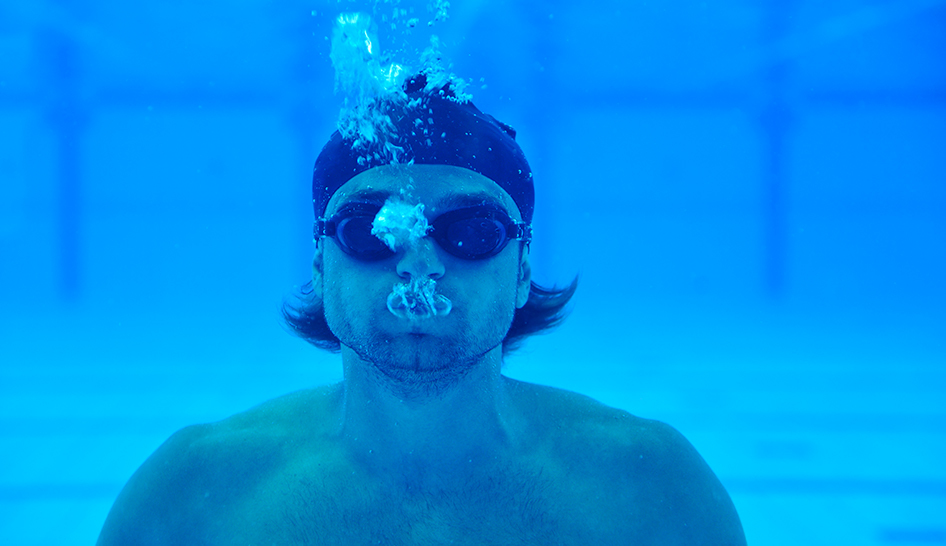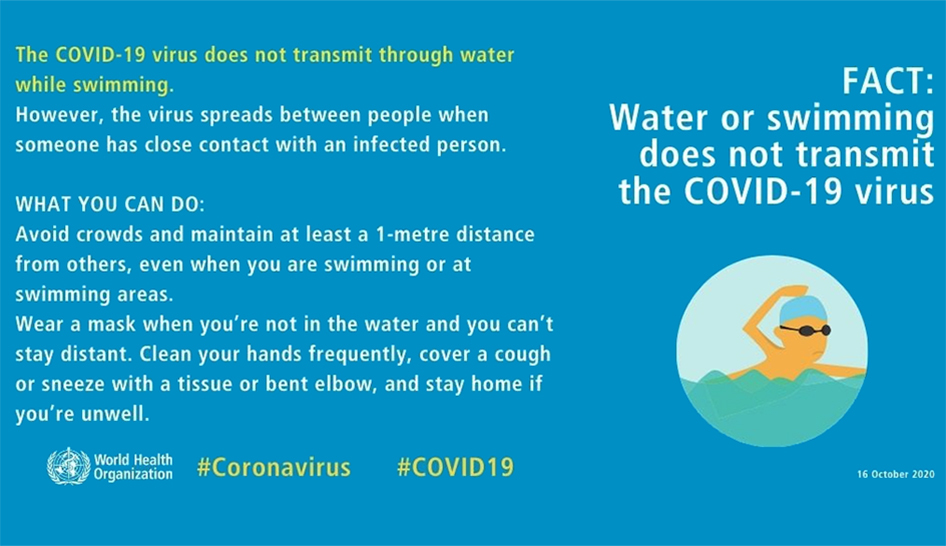Pool, Hot Tub, & Sauna Safety During COVID-19
Many health clubs have pools, hot tubs, or saunas. Learn how to keep members as safe as possible while using those facilities during the COVID-19 pandemic.
We're testing a new feature. Click the play button above to listen to this article!
Updated January 5, 2021
Note: Important further updates have been made to this article as more research and data becomes available around COVID-19, including the latest statement and infographic from the World Health Organization (WHO), which reiterates that swimming pools are safe. Head to the IHRSA Forum to get more information from IHRSA members and experts around the globe.
Paul Hackett, a Chartered safety & health practitioner and OSHCR registered consultant, contributed to this article.
The COVID-19 outbreak has fitness and sports facilities around the world taking additional measures above and beyond standard protocol to ensure their facilities are safe and clean. Industry experts Kilian Fisher, M.IoD, Dip.M, FCIMSPA, DMS, and Paul Hackett, MSc, CMIOSH, PIEMA, FCIMSPA, MISPE, MIIRSM, shared their insights on pool, sauna, and steam room safety measures to help prevent the spread of coronavirus.
Fisher is IHRSA’s International Public Policy Advisor and has extensive experience operating pools and spas in the U.K. and Ireland. He also led the development of National Guidelines and Training in both the U.K. and Ireland and is the former chair of the IHRSA Board Standards Committee. Hackett is a Chartered Safety & Health Practitioner and OSHCR Registered Consultant.

Along with tracking the latest on pool safety, IHRSA launched the Active & Safe Commitment in December 2020, as an initiative to reaffirm the health club industry’s unyielding dedication to safety at this time when exercise has never been more important to global health.
Developed by industry experts in accordance with the foremost public health guidance, the Active & Safe Commitment serves three main purposes:
- To demonstrate the industry’s united commitment to safety for members, guests, and staff;
- To provide health club members and guests with well-founded peace of mind during club visits; and
- To reassure policymakers and public health officials that health clubs should not be shut down during the COVID-19 pandemic, but rather should be relied upon as safe environments for exercise that can serve as responsible, credible, and effective partners for reducing the pandemic’s catastrophic toll on physical, mental, and emotional well-being.
"The Active & Safe Commitment is a public expression of our highest values as an industry,” said Brent Darden, former interim president & CEO of IHRSA. “I strongly encourage every health club operator to sign the commitment, boldly stand united with fellow operators across the industry, and confidently proclaim health clubs as vital community resources during these challenging times.”
In addition to complementing the Active & Safe commitment, IHRSA encourages all clubs to utilize the key considerations, mitigation checklist, and risk assessment tools to help reopen clubs and keep clubs open. These resources are very valuable for clubs to use and demonstrate to members, governments, and other stakeholders that clubs are carrying on with risk assessments and mitigating risk based on the best global guidance available. Check out our webinar with the WHO (World Health Organization) Health Emergencies Team discussing these key considerations and mitigation measures to help keep clubs open/reopen around the globe.
Pool Safety
A well-run, clean swimming pool with appropriately treated water using chlorine at internationally accepted levels should provide adequate disinfection to neutralize the SARS-CoV-2 virus, which causes the COVID-19 disease.
Operators should ensure chlorine levels in pools and spas are kept between 1-3mg/l with the pH between 6.8-7.4. Spa pools that use bromine need to maintain their water at 4-6mg/l bromine or 3-5mg/l chlorine. Routine tests for microbiological quality should also be undertaken in line with national guidelines.
Given that the virus is a new one, experts cannot say with absolute certainty that it will be safe. However, most authorities believe that pool and spa waters that are adequately disinfected should not spread the disease. A bigger risk will be the face-to-face interaction between individual users of the pools and spas. The latest from the WHO on pool safety supports this advice.

Source: WHO
Continue following all the regular advice about not shaking hands and coughing/sneezing into a tissue and disposing of it immediately.
Operators will need to maintain diligent hygiene standards in changing areas, toilets, and showers. Operators need to ensure pool water standards are at their best by regular water testing and taking actions if they are not in acceptable norms.
Here are some other best practices when it comes to pool safety:
- Swimmers and spa users who feel unwell should not use public facilities and under no circumstances spit or blow their noses in the water.
- Swimmers and spa users should wash their hands with soap and water often. Do this for at least 20 seconds.
- Everyone should wash their hands when entering the facility. Use hand sanitizer gel if soap and water are not available. Health authorities recommend solutions with 60% alcohol or more.
- Everyone should cover their mouth and nose with a tissue or elbow (not their hands) when they cough or sneeze.
- Put used tissues in the bin straight away and wash your hands afterward.
- Try to avoid close contact with people who are unwell.
It is important to remember that users can introduce a variety of germs into pools and spas by not abiding by a thorough pre-swim/treatments/spa regime. Personal care products like perfumes, hair sprays, creams, etc., can introduce “bad” chemicals into swimming and spa pools and hot tubs, which can cause adverse effects on pool treatment chemicals and systems.
“Ever since my start in the industry as a swimming teacher and coach, I have always advocated for all customers (adults and children) to wear flip flops from changing rooms to poolside to avoid picking up potential infections including common fungal infections such as veruccae,” says Fisher.
In some European countries and many clubs, it is normal and often mandatory to shower before using the facilities, and some require a swimming cap.
“It is important to remember that users can introduce a variety of germs into pools and spas by not abiding by a thorough pre-swim/treatments/spa regime.”
Fisher points out that “if pre-swim/spa showering were the norm, swimming and spa pools and hot tub water would be cleaner, allow for more effective disinfection, and be more pleasant to use.”
Steam Room and Sauna Safety
Saunas operate at higher temperatures (70-100°C or 158-212°F) and have porous wood furniture that could make it difficult for any virus to survive for long. It is recommended that people do not go in them if they are feeling ill in any way and should not, for example, “sweat out a cold.” Normal cleaning with moderately degreasing cleaning agent (mild soap) should be suitable. However, safe distancing is going to be proportional to the size of the sauna. This means that most commercial saunas will have a maximum of two people, which might make them commercially unviable especially when it would be necessary to clean them between users. The time necessary for the sauna to cool down to make it safe for the operator to enter and clean would be difficult to be commercially viable.
Steam rooms operate at a far lower temperature and are not warm enough to interfere with the lifecycle of the coronavirus, so they could be a potential source of contamination. Hygiene arrangements after each use would need to be thorough and bath use would need to be controlled to the size of the unit. Not many steam rooms in the modern format would be operable with social distancing and enhanced cleaning. Turkish/Russian style steam baths can be very large and consequently have many customers simultaneously without infringing on social distancing recommendations. Also, lower operating temperatures should enable almost continuous cleaning. The risk assessment would be weighing up the ability to clean versus the number of potential clients. Activities in steam rooms, such as massage, would need to be curtailed.
Risk Assessment
Each operator will need to look at their own circumstances and operating protocols and decide whether it is reasonable to reopen sauna, steam, and other thermal rooms. Some will be able to without much change to normal day-to-day procedures, others may find it is not safe enough or commercially viable to reopen. Social distancing of at least 1 meter and possibly up to 2 meters may well be the key determinator. If it is not possible to keep distance and the facilities cleaned, then it may not be practical to open to the public.
For more information on the coronavirus, visit IHRSA’s Coronavirus Resources for Health Clubs.

Kilian Fisher previously served as IHRSA's Director of International Public Affairs and Manager of the Global Health & Fitness Alliance, IHRSA's international advocacy arm.